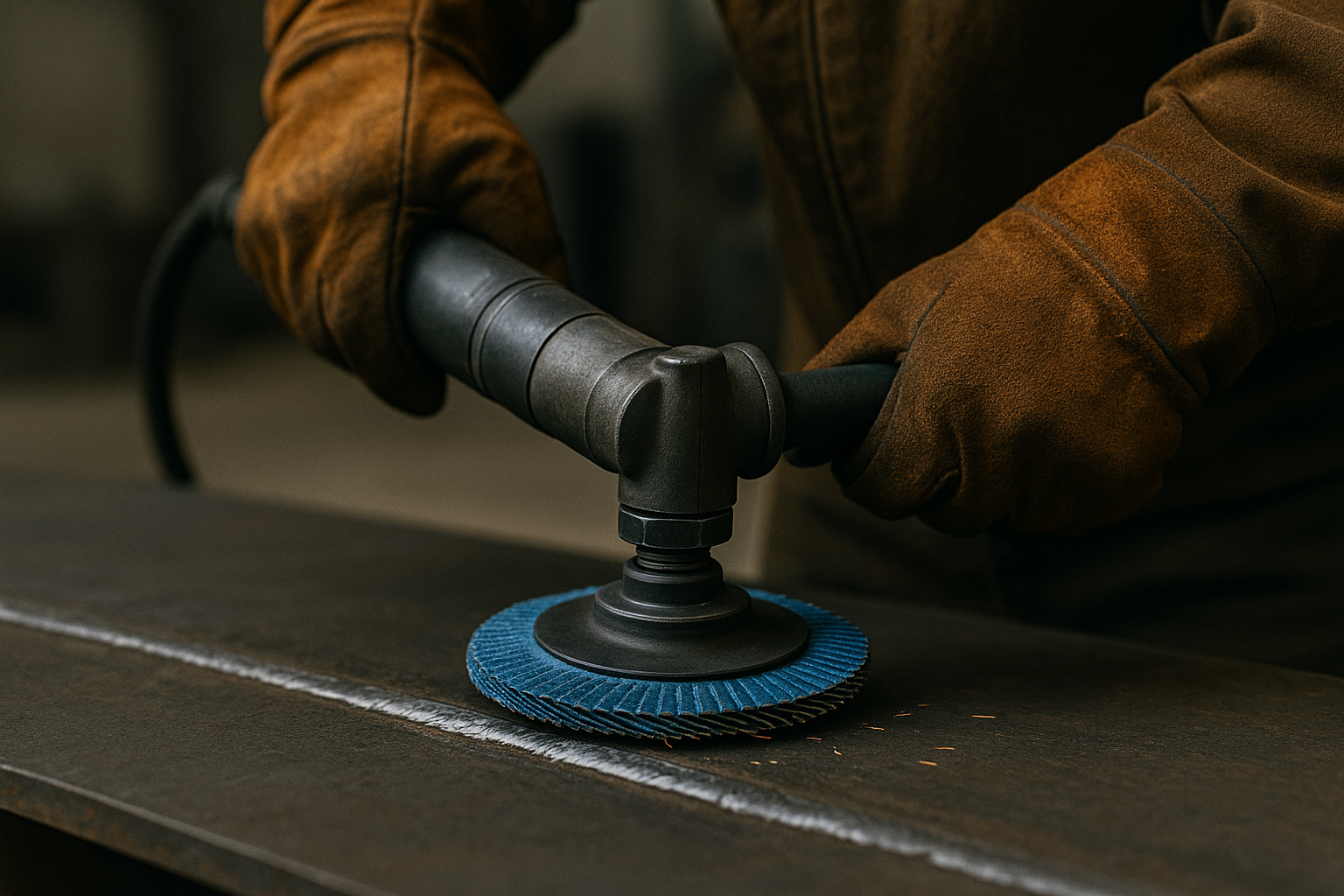
Welding
Fabricating everything from structural steel to process piping and pressure vessels involves a great deal of welding, which can be performed via different processes and procedures depending on what is being built. Some of this work can be highly specialized (e.g. dissimilar metals, heavy wall thickness, etc.).

There are over a dozen different types of welding processes primarily divided by those that join the base metals alone, and those that add filler metals to the weld joint during the process. The heat required to melt the metals can be provided by torch [e.g. oxygen-acetylene] or, more commonly, by creating an electrical arc.
Another basic difference in the different processes is whether it requires the use of “flux” to improve the metal flow, thereby improving the finished weld.
The most commonly used types of welding requiring flux are:
- Flux Cored Arc Welding [FCAW]
- Shielded Metal Arc Welding [SMAW a.k.a. “Stick”]
Both FCAW and SMAW are electrical processes and add metal to the joint. Where SMAW uses a flux-coated rod, FCAW uses a rod with flux in its core.

Whenever flux is used, weld scale or “slag” is deposited in the weld area that must be removed to prevent weld defects that may necessitate repair, as they can cause weakness in the joint; and in the case of pressure piping, potential leakage that can be dangerous. Pressure piping is therefore examined by Xray or other techniques as required by the applicable ASME Code.
Removal of slag is performed with the use of pneumatic scalers which come in various strokes and orientations. These tools are generally divided into either “Chisel” Scalers or “Needle” Scalers. The orientations are inline or pistol grip. Chisel Scalers are typically used first to remove the bulk of the slag, followed by a secondary operation with Needle Scalers to remove the smaller bits of slag that remain in the crevices of the weld joint. A chisel scaler set up consists of the percussive air tool and its accompanying chisel bit (flat or angled). A chisel scaler drives the bit in reciprocating fashion allowing for linear stroking of the workpiece. A needle scaler uses a set of 19 needles which “dance” upon the surface in percussive fashion, thus removing weld splatter.

Slag removal is required after each weld pass, which can be 10 or more, depending on the thicknesses of the base metals. This is typically performed by a welder’s helper who often has a specific brand and/or orientation preference.
International Air Tool Company carries all the major brands of Needle and Chisel Scalers, including:
- Chicago Pneumatic - Industrial Grade and General-Purpose Needle Scalers & Chipping Hammers found in both heavy and light industrial applications
- Cleco - Industrial Needle & Chisel Scalers primarily for use in fabrication and shipyards.
- CS Unitec – Needle & Chisel Scalers for use in heavy industries such as oil and gas, bridge building, new ship construction, and ship repair.
- Ingersoll Rand – Industrial and General-Purpose Needle & Chisel Scalers commonly used in harsh environments such as mining and marine as well as automotive repair facilities.
- Sioux - Square and Octagonal Shank Scalers & Air Hammers best suited to aerospace, light industrial, and maintenance use.
- Universal Tool – General Purpose Needle & Chisel Scalers that hit at speeds up to 9000 Blows Per Minute (BPM)
Following the scaling process are various methods to assure that the weld area is free of every bit of slag, as NDE-Non-Destructive Examination [e.g. X-Ray or Dye Penetrant] of the weld will reveal these as defects, necessitating a complete re-grinding and re-welding of the joint to meet ASME Code requirements for pressure piping. These methods utilize various abrasives such as:
- Pferd Tools Knotted Wire Brushes and End Brushes available in Carbon and Stainless Steel
- United Abrasives Grinding Wheels in Aluminum Oxide, Zirconia, and Ceramic.
- Walter Surface Technologies Wire Brushes, Wheels, Sanding Discs, and Sanding Drums all offered in a wide range of sizes and materials.
Surface Preparation

After these steps, the welded components must be promptly prepared for coating before corrosion can begin, which requires more Brushing (see above), Sanding and finally Primer coating, all of which are typically performed with pneumatic tools and coated abrasives. Some of the products used in these processes can be found below.
- United Abrasives – Flap Discs and Resin Fiber Discs in a variety of grains, materials, sizes, and grits.
- Pferd – Flapper Wheels, Non-Woven Abrasives, and Combi-Click discs in a variety of materials and sizes
- Dynabrade – Pneumatic Air Files, Disc Sanders and Polishers in various diameters, horse powers, RPM's, and SFM's (Surface Feet Per Minute).
Fabrication
Fabricating and assembling skidded process units requires several steps including fabricating the skid itself (primarily by welding structural steel), then mounting the equipment, fabricating and installing the piping, which involves welding and bolting, and finally finish painting.
Incidentally, all of the work described above requires a variety of PPE (Personal Protective Equipment) and tools such as Welding Helmets, Visors, Replacement Lenses, Cover Plates, Hardhats, Headgear, Sweatbands etc.
International Air Tool has you covered - For help choosing the right pneumatic tools and supplies for your welding application please call (442) 515-3765 or email info@intlairtool.com – On site visits are also available throughout San Diego County, Los Angeles County, Orange County, Riverside County, Imperial County, and Northern Baja Calfornia Mexico.

